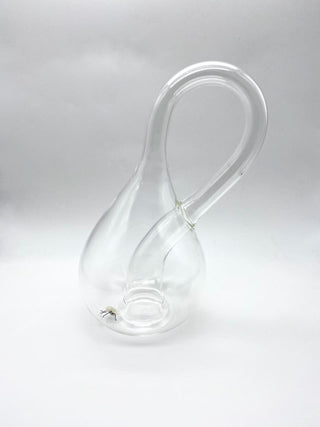Klein Bottle
The Klein bottle is a fascinating mathematical object that belongs to the realm of topology, a branch of mathematics concerned with the properties of geometric shapes that remain unchanged under certain transformations like stretching and bending.
What makes the Klein bottle particularly intriguing is its non-orientability, a concept that challenges our intuitive understanding of surfaces. Unlike most familiar surfaces, such as spheres or tori, a Klein bottle cannot be properly embedded in three-dimensional space without intersecting itself. This unique characteristic arises from its structure, which includes a single continuous surface with no distinct "inside" or "outside."
To visualize a Klein bottle, imagine taking a strip of paper, giving it a half-twist, and then connecting its ends together, but with a special twist: during the connection, one end passes through the other without creating a seam or intersection. This seamless joining results in a shape that, while technically existing in four-dimensional space, can be depicted and explored conceptually in three-dimensional space.
The Klein bottle is named after the German mathematician Felix Klein, who first described it in the late 19th century. Klein bottles are often used to demonstrate concepts in topology, such as non-orientability and higher-dimensional geometry, making them valuable tools in both mathematical research and educational settings.
Despite its theoretical nature, the Klein bottle has inspired artistic interpretations and practical applications. Artists have used its abstract form to create intriguing sculptures and visual representations that challenge viewers' perceptions of space and dimensionality. In theoretical physics and computer graphics, the Klein bottle's properties have been studied for their potential implications on complex spatial models and simulations.
The study of the Klein bottle extends beyond pure mathematics, influencing diverse fields and encouraging interdisciplinary exploration. Its enigmatic properties continue to captivate mathematicians, scientists, and artists alike, highlighting the profound connections between abstract mathematical concepts and the tangible world we inhabit.



